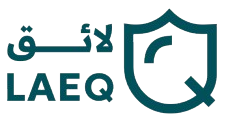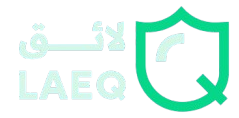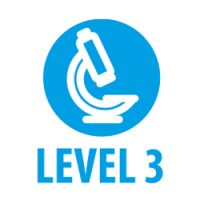| Learning Outcome |
Learning Outcome 1
1.1 Purpose of an audit/inspection to include:
• Knowledge of the following terms and the difference between them: audit, auditor, auditee;
inspection; internal (1st party), 2nd party and 3rd party audits; desk-top audits; full,
superficial, partial, vertical and horizontal inspections/audits
• Confirmation that standards have been achieved and customer’s requirements met with an
appropriate level of due diligence.
• Assessing current level of compliance and identifying areas of non-compliance
• Ensuring that the business is operating safely/within expected boundaries
• Identification of training needs
• Contribution to continuous improvement and culture
1.2 Benefits and limitations of audits/inspections.
Benefits to include:
• Identification of good areas and those needing improvement
• May identify deficiencies before they occur
• Contribution to strategic planning
• Aids due diligence
• Maintains certifications
• Reduces risk of harm, complaints and potential fines and prosecutions
• Supporting a positive culture for compliance
• Can be used for marketing
Limitations to include:
• Can disrupt business and staff may be taken away from other duties
• May be seen as negative by staff
• Staff may act differently when audited, so gives false impression
• Too few or too many audits/inspections leading to inadequate timeframes or fatigue
• May only produce a snapshot
• Difficulty in ensuring consistency leading to poor perception of value
1.3 The implications of undertaking an inadequate audit/inspection, to include:
• A superficial audit/inspection could lead to non-detection of serious non-conformances –
customers may be given false sense of security, it could result in serious criticism of
company and auditor and there is the potential for legal action, allegations of incompetency
and job losses
Learning Outcome 2
2.1 Competencies of auditor/inspector to include:
• Characteristics – personal and professional
• Knowledge and experience of operation
• People skills
2.2 Ways the conduct and characteristics of an auditor/inspector impact on an audit/inspection to
include:
• Preparation
• Opening meeting and observing common courtesies
• Questioning techniques
• Thoroughness
• Flexibility considering new evidence
• Avoidance of ritualistic defects and solutions (for example, only looking for obvious
noncompliance; not assessing application of systems, accepting compliance at face value;
instigating simple corrections such as disposing of food past its best before date as opposed
to identifying the reason this has occurred and root cause etc.).
• Ability to use a risk-based approach
• Look, listen, ask, check model
• Role of internal auditor to advise and educate, change attitudes and overcome barriers to
change, handling problems and difficult auditees
• Time management
• Overcoming language and cultural differences
• Body language and setting a suitable standard
Learning Outcome 3
3.1 The stages involved in the auditing/inspection process, to include:
• Audit process: agree scope, develop schedule based on risk, identify suitable auditor,
identify requirements and prepare checklists, aide memoir etc., establish timings, conduct
audit, agree non-conformances, verify documentation, communicate findings
• Importance of planning and preparation to ensure an effective audit/inspection
• Audit cycle (planning and preparation, opening meeting, on-site inspection, analysis, closing
meeting, written report and verifying effective completion).
• Understand the difference between audit scope and depth and identify factors which may
influence this, such as production times, seasonal production, time available etc.
• Importance and examples of auditor having suitable and correct equipment to conduct the
audit and verify controls and claims
• The importance of considering the timing of the inspection/audit (time of day/year)
• Purpose of opening and closing meetings
• Information required for a closing meeting
• Importance of re-visit or follow up inspection
3.2 Factors that influence the frequency and duration of audits/inspections:
• • Product safety risk
• • Published standards
• • Historical compliance
• • Complaints
• • Introduction of new equipment/processes/products
• • Compliance with legal/certification body requirements
3.3 Basis for audits/inspection, to include:
• Different types of standards used for auditing (e.g. company standards, customer standards,
legislative standards etc.)
• Importance of constructing a ‘model’ (standards that may be expected in accordance with
bench-marking similar industries) against which to inspect/audit
• Order and logical flow of audit to include all required aspects
• Differences found between the model and the premises inspected/audited will identify
corrective actions
• Use of checklists and aide memoires as a basis and the appropriateness of their usage in
different situations
• Relevant legislation
• Complaints
3.4 Explain how to collect accurate and comprehensive data:
• Importance of accurate and comprehensive data collection
• Understanding the difference between objective and subjective evidence
• Methods of data collection including simulation, reconstruction, checking records,
observation, and asking questions
• Effective questioning and listening techniques – understanding of the types of questions
available and why they should be used and types of questions which shouldn’t be used
• Equipment commonly used when auditing/inspecting
• Importance of gaining objective evidence to confirm or refute claims and use of more than
one form of evidence (triangulation of information derived from observation, questioning
and examining records)
Learning Outcome 4
4.1 Importance of converting raw data to coherent facts, to include:
• The importance of using evidence to support claims
• The use of indicators in assessing the potential for future non-conformance
4.2 Importance of determining the sources of problems, to include:
• Identifying the root cause of problems
• Differentiation between immediate and permanent solutions
• Importance of taking context into account when determining action
4.3 The purpose of a report, to include:
• Business can use to make improvements, and/or as evidence of compliance and due
diligence
• Communication tool
• Tool to achieve change, the report is not an end, it encourages continuous improvement
• Recognising different types of non-conformances
|




